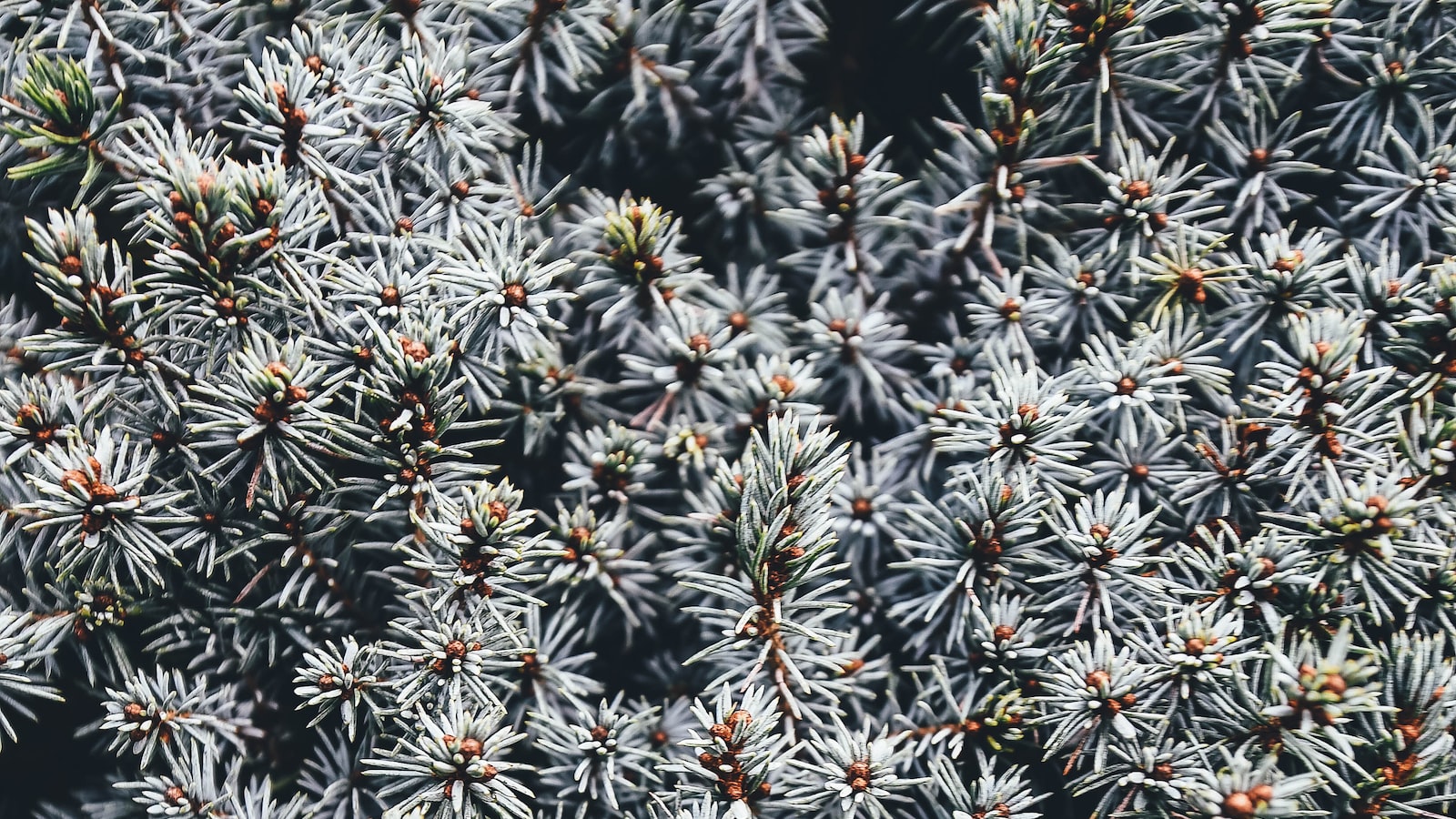Unveiling the Secrets of the Transplantation Dance: Relocating the Majestic Crepe Myrtle
In the enchanting realm of horticulture, one cannot help but be captivated by the resplendent beauty of the crepe myrtle. With its cascading blooms, fiery foliage, and graceful presence, this arboreal wonder has a way of bewitching even the most impassive of gardeners. Yet, there are times when the ebb and flow of life beckons us to uproot our beloved companions, bestowing upon them a new home where they can flourish once again. And so, with bated breath and an ardent desire to preserve the mystique of these botanical treasures, we embark upon a momentous journey: the artful transplantation of the crepe myrtle.
In this ethereal symphony of horticultural prowess, we shall uncover the secrets and techniques behind the successful relocation of a crepe myrtle, ensuring its seamless transition and continued growth. Join us as we delve into the delicate dance between gardener and plant, learning how to gently coax the roots from their snug abode, nourish the soul of the tree during the transplantation process, and provide the nurturing environment it craves.
Fear not, for this article anticipates the yearning in every gardener’s heart for knowledge and guidance. With a neutral tone and a dash of creativity, we shall demystify the intricacies of crepe myrtle transplantation, offering insights tailored for gardeners of all backgrounds, whether novice or seasoned. So, put on your gardening gloves, ready your spade, and let us embark upon an odyssey through the verdant landscapes, as we learn the secrets of this transitory ballet – the delicate art of transplanting a crepe myrtle.
Choosing the Right Time and Location for Transplanting a Crepe Myrtle
When it comes to transplanting a crepe myrtle, choosing the right time and location is crucial for ensuring its successful relocation. Timing is everything when it comes to this delicate process, so it’s important to plan ahead and choose the optimal time to transplant your crepe myrtle. Generally, the best time to transplant is during late winter or early spring when the tree is still dormant. This allows the tree to recover more effectively and adapt to its new surroundings before the heat and stress of the summer months.
Another key consideration is selecting the right location for your crepe myrtle. This beautiful flowering tree thrives in full sun and well-drained soil. Ensure that the selected spot receives at least six to eight hours of direct sunlight each day. Prepare the new planting hole by digging it two to three times wider than the rootball. As you dig, remove any rocks, stumps, or debris that may hinder the tree’s growth. It’s essential to give the crepe myrtle enough space to grow, so choose a location where it can spread out and reach its full potential.
| Features | Tips |
|---|---|
| Full Sun | Choose a location with at least six to eight hours of direct sunlight each day. |
| Well-Drained Soil | Ensure the soil in the new planting hole has good drainage to prevent waterlogging and root rot. |
| Adequate Space | Provide enough space for the crepe myrtle to grow and spread out, considering its mature size. |

The Essential Steps to Successfully Transplanting a Crepe Myrtle
Summer is the perfect time to transplant your beloved crepe myrtle and give it a fresh start in a new location. Transplanting a crepe myrtle may seem daunting, but with the right technique, it can be a successful and rewarding experience. Here are the essential steps you need to follow to ensure a seamless transition for your crepe myrtle.
First and foremost, choose the right time for transplanting your crepe myrtle. It is best to wait until the tree is dormant during late winter or early spring, or after the blooming season in summer. Once you have the ideal timing, follow these steps:
-
Digging the Hole: Prepare a hole in the new location that is twice the diameter of the root ball and the same depth. This will provide enough space for the crepe myrtle to establish its root system.
-
Pruning: Before you transplant, trim back approximately one-third of the branches and remove any damaged or diseased parts. This will reduce stress on the tree during the transplantation process.
-
Careful Extraction: Gently dig around the root ball, keeping as much of the soil intact as possible. It’s crucial to handle the root ball delicately to avoid damaging the tree’s roots.
Once you have successfully transplanted your crepe myrtle, remember to water it thoroughly and provide regular care to ensure its healthy growth. Transplanting can be a transformative experience for both you and your crepe myrtle, allowing you to enjoy its beauty in a new part of your garden. Embrace this opportunity and witness your crepe myrtle thrive in its new home.
| Features | Tips |
|---|---|
| Proper Timing | Choose the dormant season or after blooming to minimize transplant shock. |
| Root Ball Size | Ensure the hole is twice the diameter of the root ball for sufficient space. |
| Gentle Handling | Handle the root ball with care to avoid damaging the roots during extraction. |

Tips for Minimizing Stress and Ensuring Healthy Growth after Transplantation
Transplanting a crepe myrtle can be a rewarding endeavor if done correctly. With a few helpful tips, you can minimize stress on the plant and ensure its healthy growth in its new location. Remember, transplants require a bit of extra care and attention to establish strong roots and adapt to their new environment.
Tip 1: Timing is everything! To minimize stress, choose a time to transplant your crepe myrtle when the plant is dormant. Late winter or early spring, before new growth appears, is the ideal moment. This way, the plant’s energy will be focused on root development instead of supporting foliage.
Tip 2: Preparing the new location is crucial for successful transplantation. Ensure that the soil is well-draining and rich in nutrients by incorporating organic matter like compost or aged manure. Dig the hole twice as wide as the root ball and just as deep. This will allow the roots to spread and establish themselves more easily. Avoid planting the crepe myrtle too deeply, as this can inhibit growth.
| Feature/Tips | Description |
|---|---|
| Watering | Provide adequate water to newly transplanted crepe myrtle, but avoid overwatering to prevent root rot. |
| Pruning | Prune the branches of the crepe myrtle by cutting them back to encourage vigorous growth and shape the plant. |
| Mulching | Apply a layer of organic mulch around the base of the crepe myrtle to retain moisture, suppress weeds, and protect the roots from extreme temperatures. |

Expert Recommendations for Maintaining and Nurturing Transplanted Crepe Myrtles
Transplanting a crepe myrtle tree requires careful consideration and proper technique to ensure its successful relocation and subsequent growth. To help you in this endeavor, here are some expert recommendations to follow:
Choose the Right Time:
- Transplant crepe myrtles during their dormant season, typically in late winter or early spring.
- Avoid transplanting during hot summer months, as the stress could be too much for the tree.
Prepare the New Location:
- Ensure the new spot has well-draining soil that is rich in organic matter.
- Dig a hole twice the width and the same depth as the root ball to allow the roots to comfortably adjust.
- Amend the soil with compost or peat moss to improve its structure and nutrients.
| Features | Tips |
|---|---|
| Watering | Water consistently but avoid over-watering to prevent root rot. |
| Sunlight | Ensure the transplanted crepe myrtle receives at least 6-8 hours of sunlight per day. |
| Pruning | Prune the tree lightly after transplanting to encourage new growth and maintain a balanced shape. |
By following these recommendations, you can increase the chances of your transplanted crepe myrtle thriving in its new location. Remember, patience is key when it comes to nurturing newly transplanted trees, as they require time to establish their root systems and adapt to the new environment.
Frequently Asked Questions
Q: Why is transplanting a crepe myrtle like playing matchmaker?
A: Just like finding the perfect partner, transplanting a crepe myrtle requires careful consideration of location, soil conditions, and sunlight preferences to ensure a successful match – resulting in a beautiful lasting relationship!
Q: Can I simply dig up a crepe myrtle and move it to a new spot?
A: While moving a crepe myrtle might seem as easy as picking it up and plopping it somewhere else, it’s crucial to follow a few essential steps. These include planning ahead, proper digging technique, and providing the tree with enough TLC during and after the transplant process.
Q: What’s the secret to keeping my crepe myrtle happy in its new home?
A: Ah, the secret to cultivating love! In this case, it lies in paying attention to the crepe myrtle’s needs post-transplant. Providing ample water, avoiding excessive pruning, and allowing the tree enough time to establish its roots are key to a thriving, happily-ever-after in its new location. As the final rays of sunlight dance upon your newly transplanted crepe myrtle, you can’t help but feel a sense of accomplishment and fulfillment. The journey of nurturing and caring for this majestic beauty has reached its climax, as you bid farewell to its old home and eagerly anticipate its growth in a new abode. Like a nomad finding a new haven, the crepe myrtle embarks on a fresh chapter, spreading its roots and flourishing under your watchful eye.
Transplanting a crepe myrtle is no mere task; it is a dance of patience, love, and scientific precision. From assessing the perfect time and place to delicately extracting the tree, to ensuring a seamless transition to its new surroundings, every step requires utmost care and attention. But fear not, for armed with knowledge and determination, you have triumphed over adversity.
Now, as you stand before the empty space that once cradled your crepe myrtle, you marvel at the possibilities that lie ahead. A blank canvas, waiting for new whispers of life to take root. Perhaps you envision a tapestry of vibrant blooms, inviting a symphony of pollinators to revel in its nectar. Or maybe you imagine a majestic solitaire, proudly gracing the landscape as a testament to your horticultural prowess.
But amidst these dreams and aspirations, remember that this journey is not solely about the destination. It’s about the bonds forged through nature touching your soul. The sun-kissed moments spent carefully tending to the crepe myrtle’s every need, the quiet conversations shared as you whispered words of encouragement, and the sense of connection that blooms alongside your beloved tree.
As you reflect on this experience, take solace in knowing that you have played a significant role in reshaping the destiny of this noble tree. It will continue to grow, adapting to its new environment, bearing witness to the cyclical wonders of the seasons. And in doing so, it will serve as a constant reminder of your dedication and commitment to the art of transplantation.
So let this be an ode to the crepe myrtle, a symbol of resilience and beauty, and to your unwavering spirit as a caretaker. As you conclude this chapter, take a moment to celebrate the triumphs of today, knowing that your crepe myrtle will stand tall, a testament to your love for nature and the extraordinary efforts it takes to create a flourishing world around us.
- When to Put Weed and Feed on Lawn in Michigan - October 16, 2023
- When to Fertilize Potatoes Plants - October 16, 2023
- Can You Plant Clover in the Spring - October 16, 2023
Contents
- 1 Choosing the Right Time and Location for Transplanting a Crepe Myrtle
- 2 The Essential Steps to Successfully Transplanting a Crepe Myrtle
- 3 Tips for Minimizing Stress and Ensuring Healthy Growth after Transplantation
- 4 Expert Recommendations for Maintaining and Nurturing Transplanted Crepe Myrtles
- 5 Frequently Asked Questions

